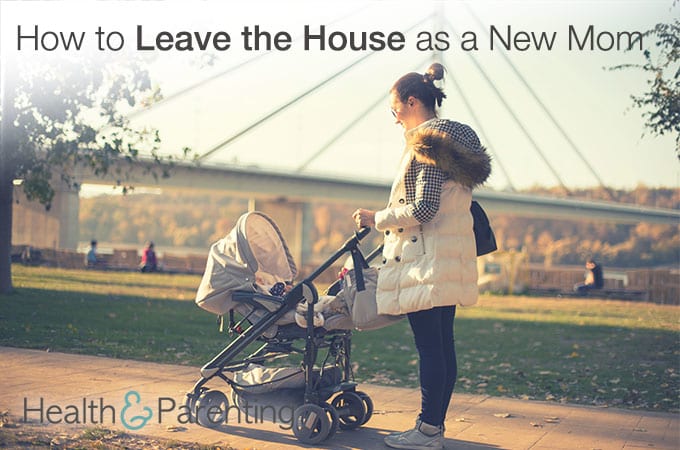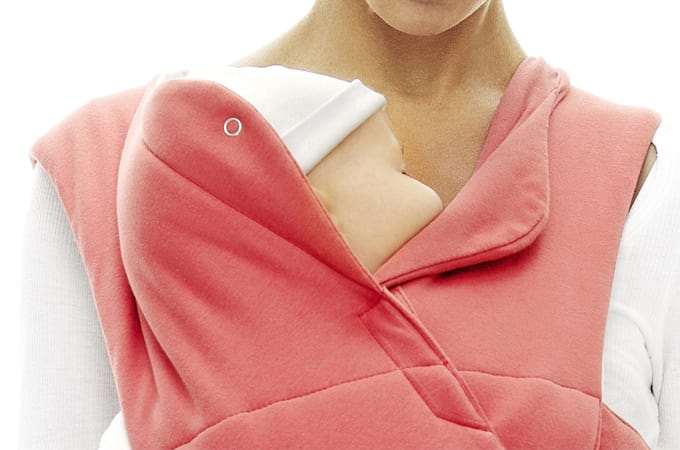Remember when you used to grab your phone, purse and keys and leave the house without a second thought? Those were the days, eh? These days, you’re lucky if you make it out of the house at all. On the occasions you do, it feels like you’ve brought most of the house contents with you, stuffed into your surprisingly heavy diaper bag. If you’re a new parent wondering how you can get out of the house a little easier, try these seven easy steps to freedom:
- Get everyone dressed
This will take approximately three hours from the moment you wake up. You will spend three minutes in the shower, and most of this time will be spent running out of the shower because you think you can hear the baby crying. It’s the shower playing tricks on you. You’re not crazy. About an hour will be spent frantically searching for a top that isn’t covered in baby puke. You’ll find one, eventually, but it won’t necessarily fit very well. Nevermind, it will have to do. Now you just need to get the baby dressed, but which adorable tiny outfit should you choose?
- Pack the diaper bag
Once you’re both dressed, it’s time to pack the diaper bag. You’ll need to take at least eight clean diapers out with you just in case. You can never predict when a poo explosion will occur. Maybe it’s best to just take a whole pack of diapers just in case? And a change of clothes for the baby, and some toys that you already know she’ll never play with. And some baby wipes, some water for you (breastfeeding is thirsty work) and a hat for the baby (you never quite tell when it’s going to suddenly drop below 0 these days. Thanks, climate change). Once the diaper bag is so full you can barely lift it, you’re almost ready to go.
- Find all the things
Now you just need to find all your things. Purse, check. Keys, check. Phone… Where’s your phone? Now you’ll need to spend at least 30 minutes searching every nook and cranny in the house to see where you’ve left your phone. Thanks to baby brain, that phone really could be anyway. It was in the salad drawer last week, and the diaper bin the week before. After 30 minutes of searching, you’ll decide to call it to try and follow the vibrations (only a crazy new mom would have a ringtone that might wake her new baby). Oh great, it’s engaged. Oh wait, that’s because you’re trying to ring your phone from your phone. Ha, it’s been in your hand this whole time. Oh, baby brain…
- Walk to the door
You’ve done it. You’re both dressed and ready to get. The diaper bag is packed and you have all of your belongings. You can almost taste freedom. Reach for that door handle…
- Game over
Before your fingers touched the door handle, the baby is awake and crying. Loudly. She’s hungry. It’s time for a feed. You were so close to being on time too. Better text your friend and say you’ll be late…
Half an hour on the sofa and your baby is fed and back asleep. The only problem is that now she’s pooped. You’d better head back upstairs and change that stinky diaper.
Ok, the clean diaper is on, the baby is fed and so far, you’re only 45 minutes late. It’s not great but it’s certainly not your record. Now you just need to clip the baby into the car seat and off you go…
- Back to square one
Ah, of course, she threw up in the car seat. Always the way, isn’t it? And now there’s a lovely little puddle of sick on the adorable outfit you picked out. Better run upstairs and choose something different for her to wear. And, of course, now that she’s changed, she’s hungry again. After throwing up most of her lunch, it’s no wonder she’s hungry again. Better quickly feed her before you set off. After all, you’re only an hour and a half late so far.
- Go go go!
Right, the baby is asleep, fed and changed. Now you’d better run out of the house super fast before something bad happens and you have to start this whole ordeal again. I wonder if your friends will still be waiting for you…
Written by Fiona (@Fiona_Peacock), mother, writer and lover of all things baby related.
This information is not intended to replace the advice of a trained medical doctor. Health & Parenting Ltd disclaims any liability for the decisions you make based on this information, which is provided to you on a general information basis only and not as a substitute for personalized medical advice. All contents copyright © Health & Parenting Ltd 2016. All rights reserved.











